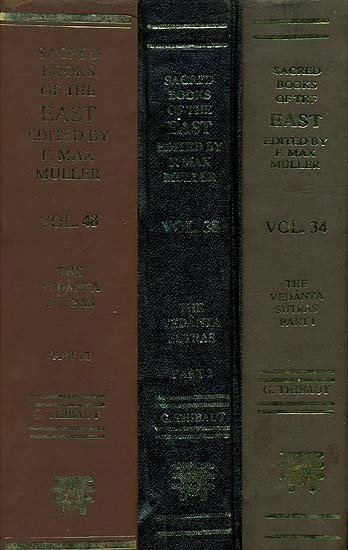Brahma Sutras (Ramanuja)
by George Thibaut | 1904 | 275,953 words | ISBN-10: 8120801350 | ISBN-13: 9788120801356
The English translation of the Brahma Sutras (also, Vedanta Sutras) with commentary by Ramanuja (known as the Sri Bhasya). The Brahmasutra expounds the essential philosophy of the Upanishads which, primarily revolving around the knowledge of Brahman and Atman, represents the foundation of Vedanta. Ramanjua’s interpretation of these sutras from a V...
Sutra 1.3.41
41. On account of light being seen (declared in the text).
Between the two texts referring to the Person of the size of a thumb, there is a text declaring that to that Person there belongs light that obscures all other light, and is the cause and assistance of all other light; and such light is characteristic of Brahman only. 'The sun does not shine there, nor the moon and the stars, nor these lightnings, and much less this fire. After him, the shining one, everything shines; by his light all this is lighted' (Ka. Up. II, 5, 15)—This very same śloka is read in the Ātharvaṇa (i.e. Muṇdaka) with reference to Brahman. Everywhere, in fact, the texts attribute supreme luminousness to Brahman only. Compare: 'Having approached the highest light he manifests himself in his own shape' (Ch. Up. VIII, 12, 3); 'Him the gods meditate on as the light of lights, as immortal time' (Bṛ. Up. IV, 4,16); 'Now that light which shines above this heaven' (Ch. Up. III, 13, 7).—It is thus a settled conclusion that the Person measured by a thumb is the highest Brahman.—Here terminates the adhikaraṇa of 'him who is measured' (by a thumb).
